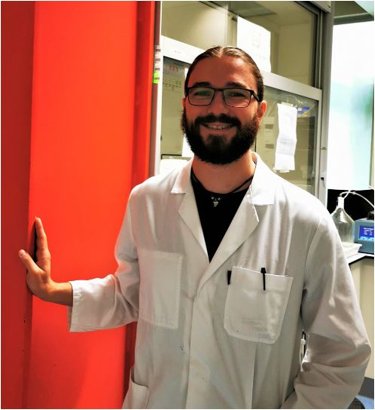Engineering the tumor microenvironment - Novel 3D in vitro models to study cellular interactions & therapeutics
Due to the COVID-19 crisis the PhD defence of Marcel Heinrich will take place (partly) online.
The PhD defence can be followed by a live stream.
Marcel Heinrich is a PhD student in the research group Biomaterials Science and Technology (BST). His supervisor is prof.dr. J. Prakash from the Faculty of Science & Technology (S&T).
 During tumor development, cancer cells actively act on and reshape their surrounding tissue, creating what is known as the tumor microenvironment (TME). The TME presents a complex network of cellular and acellular components that eventually help the tumor to grow, invade the surrounding tissue, escape the immune system and evade treatment. With increased understanding of the TME, novel treatment strategies have been developed that do not focus on killing the tumor cells, such as conventional chemotherapy, but on modulating this TME. Although such strategies seem promising, only a fraction of novel drug candidates reach the clinics and most drugs already fail in early pre-clinical stages. One of the main reasons for this failure is the lack of cell culture (in vitro) models that represent the TME in a biologically relevant fashion that allow to evaluate and optimize novel drug candidates in an efficient manner.
During tumor development, cancer cells actively act on and reshape their surrounding tissue, creating what is known as the tumor microenvironment (TME). The TME presents a complex network of cellular and acellular components that eventually help the tumor to grow, invade the surrounding tissue, escape the immune system and evade treatment. With increased understanding of the TME, novel treatment strategies have been developed that do not focus on killing the tumor cells, such as conventional chemotherapy, but on modulating this TME. Although such strategies seem promising, only a fraction of novel drug candidates reach the clinics and most drugs already fail in early pre-clinical stages. One of the main reasons for this failure is the lack of cell culture (in vitro) models that represent the TME in a biologically relevant fashion that allow to evaluate and optimize novel drug candidates in an efficient manner.
This thesis describes the development of novel 3D in vitro models that are able to mimic the complexity of the TME in a laboratory environment. In detail, the first part of this thesis focuses on the use of 3D bioprinting as novel and promising strategy to generate 3D models describing the 3D bioprinting of low concentrations of gelatin methacryloyl (GelMA) in a controlled fashion, the applications of multi-material bioprinting strategies as well as the effects of potential endotoxin contamination within GelMA on the cancer-immune cell crosstalk and on the efficacy of therapeutics in potentially contaminated materials. The second part of the thesis describes the generation of 3D in vitro models to mimic pancreatic ductal adenocarcinoma (PDAC) focusing on the highly fibrotic barrier surrounding the tumor cells and on the collapse of blood vessels within the PDAC TME. Furthermore, the evaluation of anti-fibrotic treatment strategies is demonstrated in the generated models. The third part of this thesis describes the generation of 3D in vitro models to mimic glioblastoma multiforme highlighting the crosstalk between cancer cells and infiltrating macrophages as well as the crosstalk between cancer cells, astrocytes and microglia in the brain. Moreover, the use of these models for the evaluation of chemo- and immunotherapy is demonstrated.
The integration of the techniques and models described in this thesis into the common drug development process is likely to render drug development more efficient, eventually reducing the time and costs to translate novel therapeutics to the clinics as well as drastically reduce the number of animals needed.





